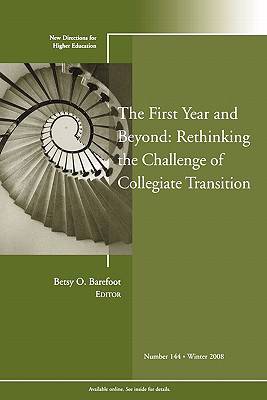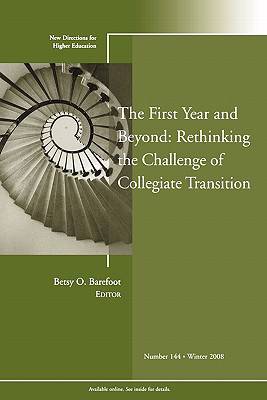
- Afhalen na 1 uur in een winkel met voorraad
- Gratis thuislevering in België vanaf € 30
- Ruim aanbod met 7 miljoen producten
- Afhalen na 1 uur in een winkel met voorraad
- Gratis thuislevering in België vanaf € 30
- Ruim aanbod met 7 miljoen producten
Omschrijving
In spite of its importance to students and institutions, the first year is not only the significant transition period that affects student success. This volume expands the lens to include a view of transitions that precede and follow the traditional first year, as well as the critical junctures throughout the undergraduate years that promote or impede student progress to a degree.
Chapters discuss:
- Rethinking College Readiness
- Blending High School and College: Rethinking the Transition
- New Challenges in Working with Traditional-Aged College Students
- From Helicopter Parent to Valued Partner: Shaping the Parental Relationship for Student Success
- Adult Students in Higher Education: A Portrait of Transitions
- Sophomores in Transition: The Forgotten Year
- "Feeling like a Freshman Again": The Transfer Student Transition
- Institutional Efforts to Move Seniors Through and Beyond College
- College Transitions: The Other Side of the Story
This is the 144th volume of the Jossey-Bass quarterly report series New Directions for Higher Education Addressed to presidents, vice presidents, deans, and other higher education decision makers on all kinds of campuses, New Directions for Higher Education provides timely information and authoritative advice about major issues and administrative problems confronting every institution.
Specificaties
Betrokkenen
- Auteur(s):
- Uitgeverij:
Inhoud
- Aantal bladzijden:
- 112
- Taal:
- Engels
- Reeks:
- Reeksnummer:
- nr. 144
Eigenschappen
- Productcode (EAN):
- 9780470448472
- Verschijningsdatum:
- 1/12/2008
- Uitvoering:
- Paperback
- Formaat:
- Trade paperback (VS)
- Afmetingen:
- 147 mm x 221 mm
- Gewicht:
- 136 g

Alleen bij Standaard Boekhandel
Beoordelingen
We publiceren alleen reviews die voldoen aan de voorwaarden voor reviews. Bekijk onze voorwaarden voor reviews.











